How the LG washing machine works
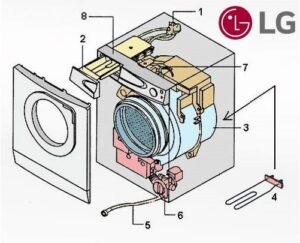 Every day technologies become more and more complex and they are being introduced into new washing machines. However, this does not mean that you should not even try to understand this household appliance, because knowing how an LG washing machine works can be very useful not only for general education, but also for potential repairs at home. As part of today's publication, we will take a closer look at the structure of an automatic washing machine and find out what its various elements are responsible for.
Every day technologies become more and more complex and they are being introduced into new washing machines. However, this does not mean that you should not even try to understand this household appliance, because knowing how an LG washing machine works can be very useful not only for general education, but also for potential repairs at home. As part of today's publication, we will take a closer look at the structure of an automatic washing machine and find out what its various elements are responsible for.
The operating principle of this machine
Any work cycle begins with loading dirty things into the drum. In this process, it is important to take into account the volume of the drum, which can accommodate both a large amount of laundry, for example, as much as 10.5 kilograms in the LG AI DD TW4V3RS6W machine, and a small amount, say, 2.5 kilograms in the LG TW252S washing machine. Immediately after loading, powder or gel is loaded into the household chemical tray. The final stage is the selection of the operating mode and additional functions, after which the work cycle is started using the “Start” button. Now let's find out the working principle of the washing machine.
- Immediately after starting the washing machine, the control module supplies power to the hatch locking device to securely lock the door, which occurs in the first seconds after the cycle is activated. After this, the hatch will not be able to accidentally open during washing, and will not let water through.
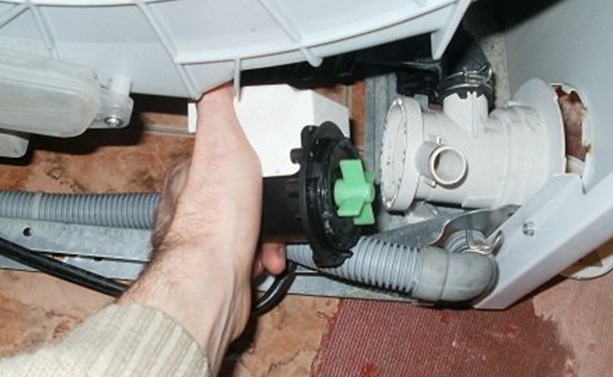
- Afterwards, the drain pump is activated, which begins pumping out the remaining water from the tank so that the water used in the previous cycle does not get on things.
There may be no dirty waste water in the tank at all, but the pump will still work just in case.
- Next, the control module will send a command to open the fill valve, which will cause water to flow into the washing machine.
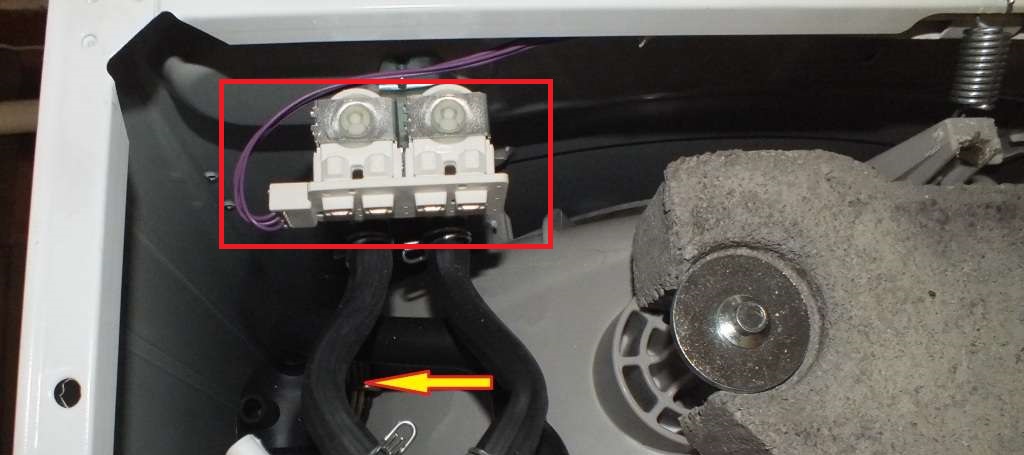
- The liquid will enter the drum through the detergent dispenser, so it will wash household chemicals into the tank, so that along with the water, the active detergent for washing clothes will also get there.
- At the same time, while the liquid is being collected, the drum will begin to rotate slowly so that the clothes inside are evenly wet.
- The liquid will continue to accumulate until the water level sensor determines that there is enough water in the tank to operate.
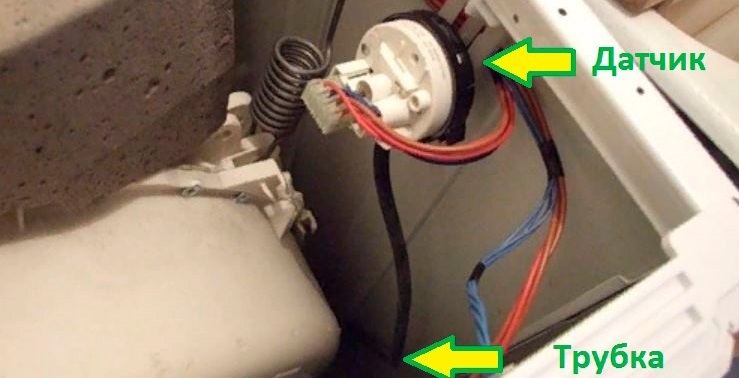
- After this, the pressure switch will send information about a sufficient water level to the control module so that it commands the fill valve to close.
- Now the module will force the engine to work fully so that it activates the rotation of the drum according to the program selected by the user.
Since programs always pursue strictly specific goals, the drum will always rotate in an intricate way - alternating between sides and rotation speed.
- The operating principle of a modern drum in a tank is the presence of direct drive technology. The inverter electric motor of the washing machine is connected directly to the drum, and not through a drive belt, as was previously the case. Because of this, the engine, after a command from the module, immediately begins to interact with the drum pulley.

- At the end of the wash, the machine will drain all used liquid, for which the control board will order the drain pump to pump out waste water from the tank.
- Afterwards, the fill valve will again be commanded to fill the machine with some clean water. This is done to quickly rinse the tank and then drain the dirty water.
- Finally, the device will again begin to draw water, but this time much more, so that it is enough to rinse the items covered with powder or gel.
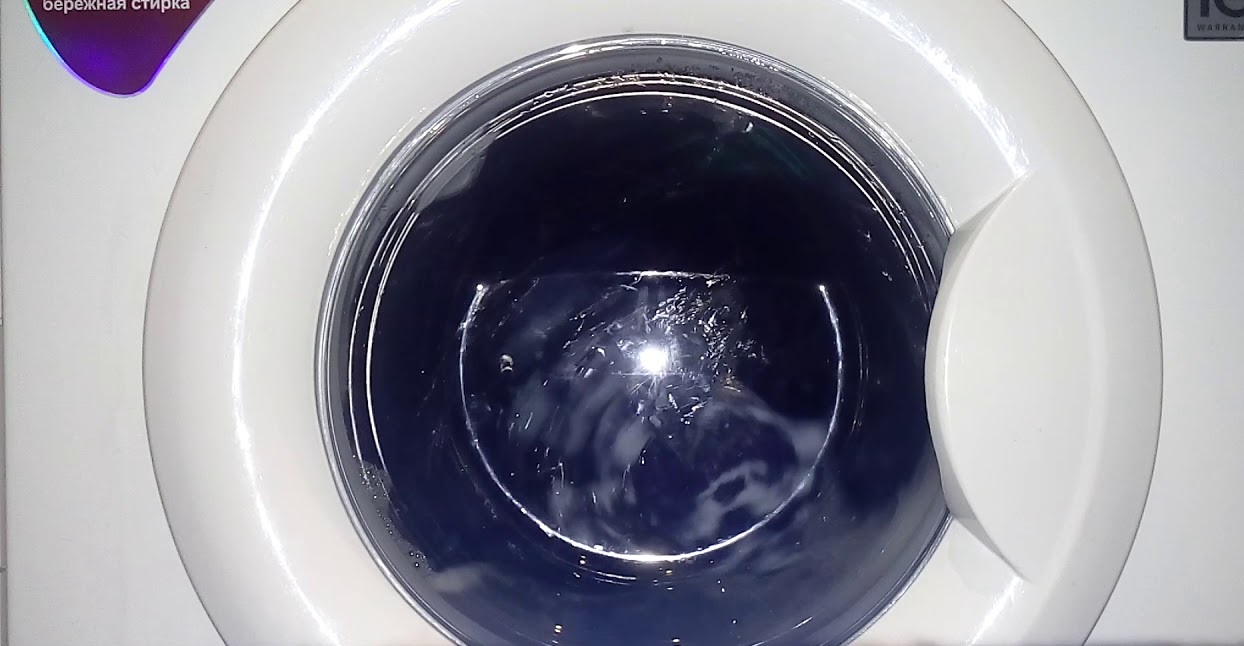
- The rinsing process begins, during which the fabric will be freed from residual household chemicals.
- At the end of the rinse, the next portion of dirty water goes down the drain, and the control module activates the spin cycle.
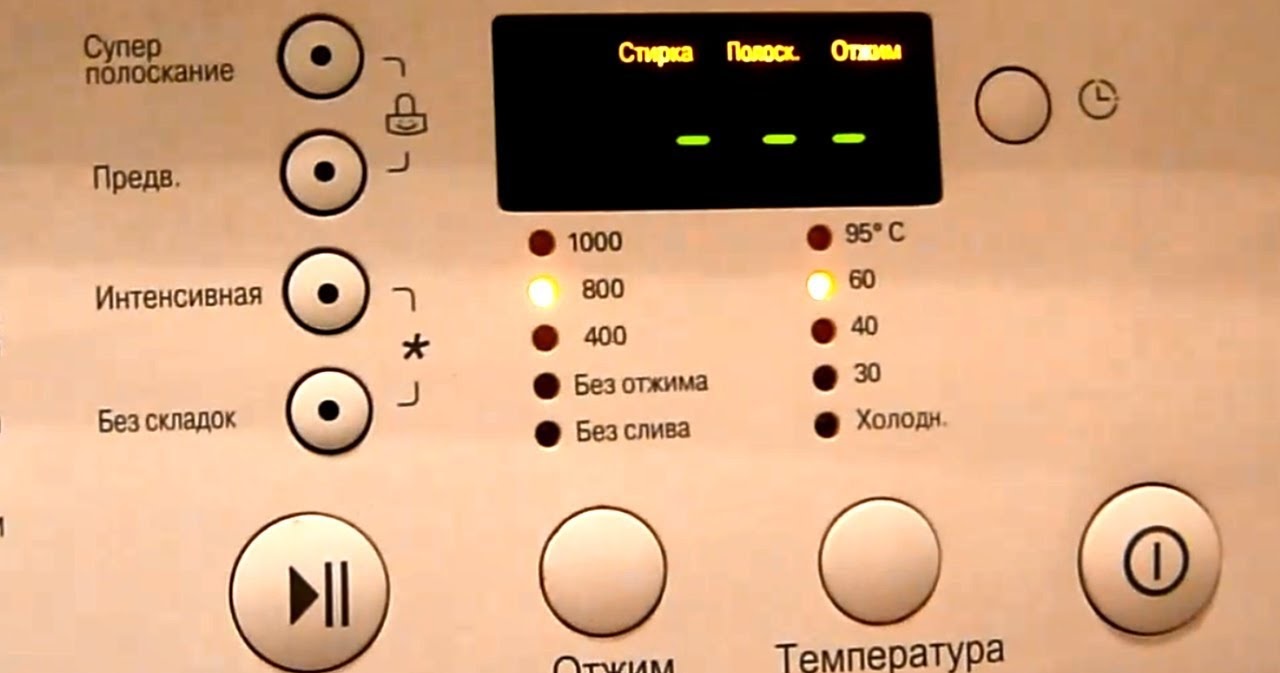
- The spin speed depends on the user settings and capabilities of the machine, so the number of revolutions per minute can be as low as 800 or as high as 1400-1600.
The higher the revolutions per minute, the higher not only the spin speed, but also the risk of damaging the fabric, so experts do not recommend spinning clothes made of delicate fabric at speeds exceeding 800 revolutions.
- The laundry is wrung out by centrifugal force, which pushes water out of the clothes as it rotates. At this stage, the washing machine shakes and makes a lot of noise due to the fact that the rotation speed of the drum reaches its maximum value, which does not happen during washing.
- When the spin cycle is completed, the control module will order the pump to get rid of the liquid from the tank, and then complete its work and turn off the washing machine.
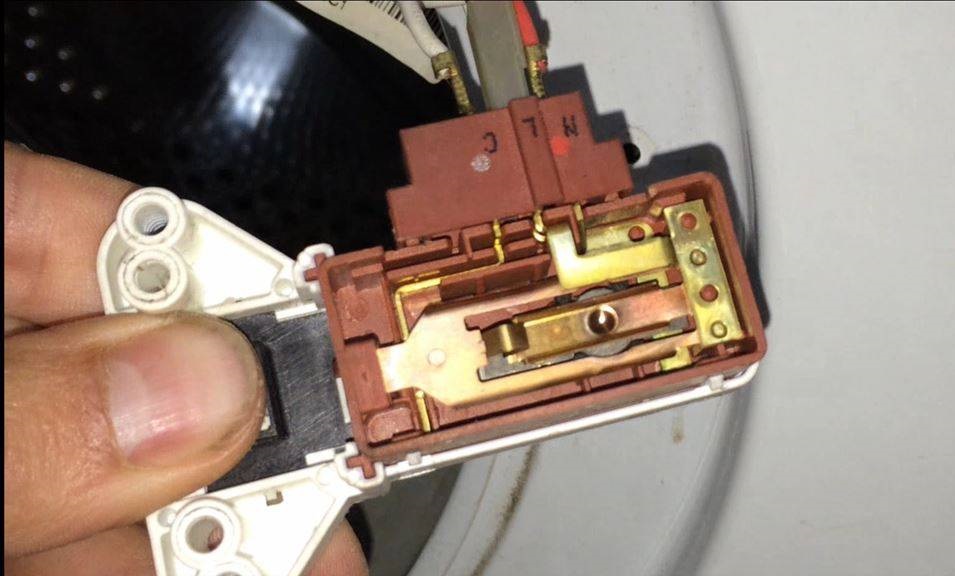
- The final stage is the unlocking of the hatch, which will be done some time after the end of the working cycle, since the bimetallic plate inside the hatch locking device must have time to cool down.
Why is there a heavy block inside the machine?
Often users want to look at the internal structure of the “home assistant” with their own eyes, for which they open the top cover of the case. There is nothing wrong with this if the manufacturer's warranty has already expired, otherwise it is better not to open the top cover of the SM case so as not to lose warranty service. Removing the cover you can see the fill valve, dispenser, pressure switch, control module, as well as a huge counterweight, which is why the machine weighs so much.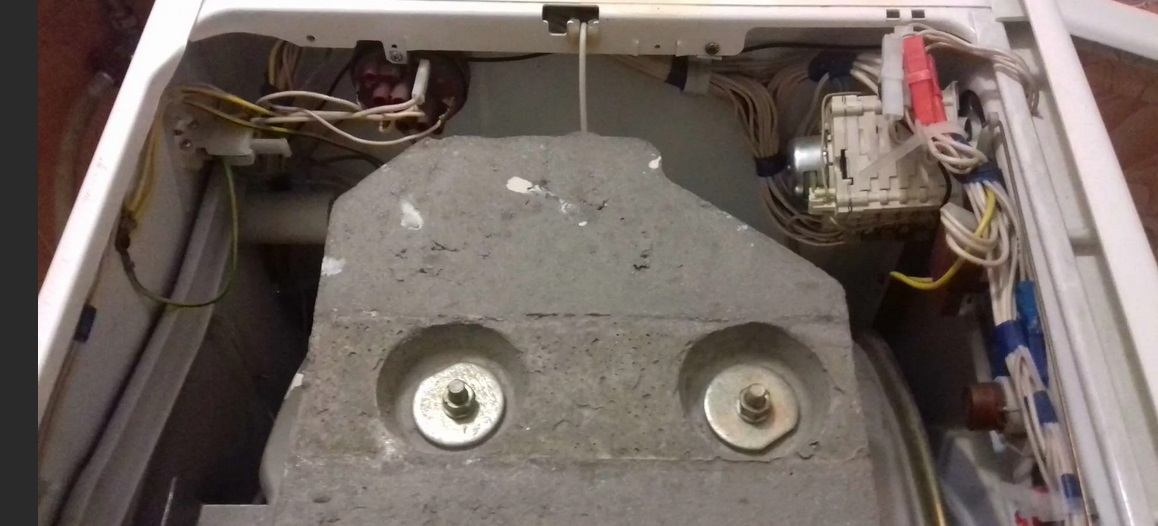
The answer to the question why this heavy block is needed inside is very simple. It is this counterweight that holds the washing machine during the wash and during the spin cycle. If there were no concrete counterweight, the centrifugal force would cause the machine to sway so much that it would fall over on its side or simply “jump” all over the bathroom. Therefore, the greater the counterweight, the better it is for household appliances. However, sometimes this rule is not followed, because in the case of narrow washing machines, manufacturers usually specifically reduce the counterweight so that it fits into the body of a miniature device, which is why the stability of the device suffers.
Interesting:
Reader comments
- Share your opinion - leave a comment
Categories
Washing machine repair


For buyers

For users

Dishwasher


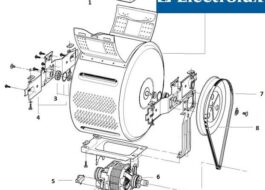
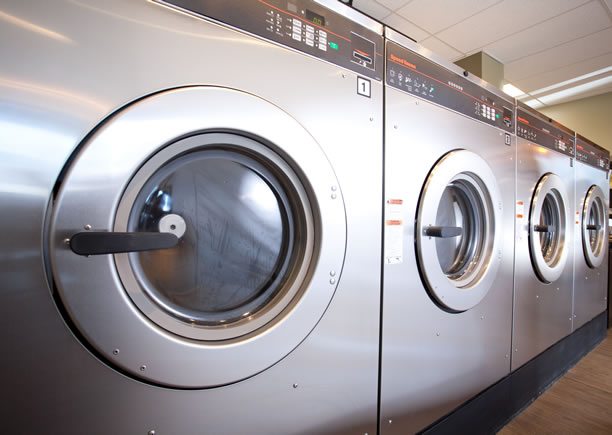
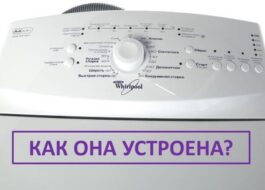
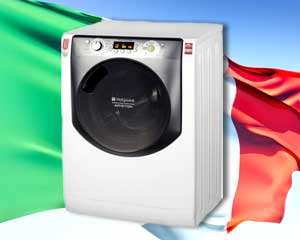
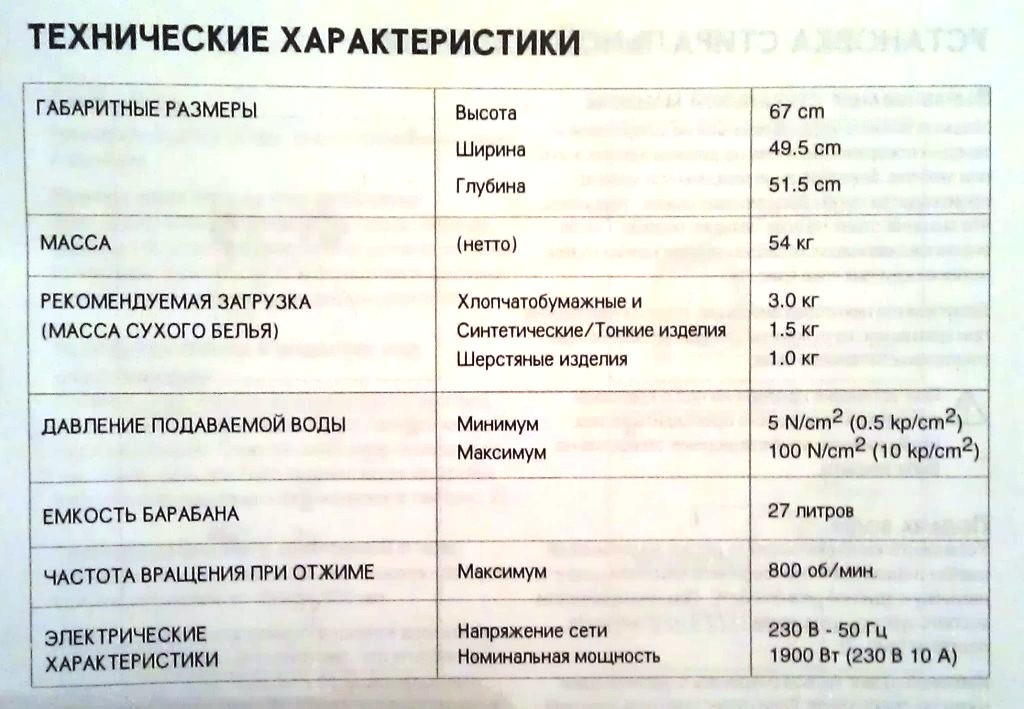










Add a comment